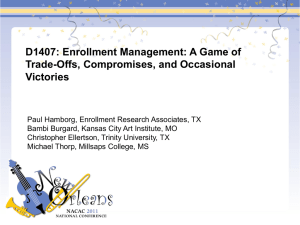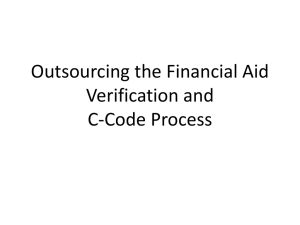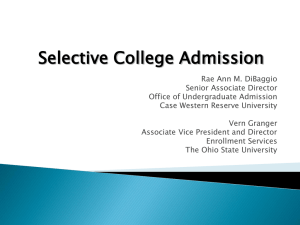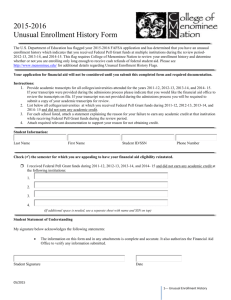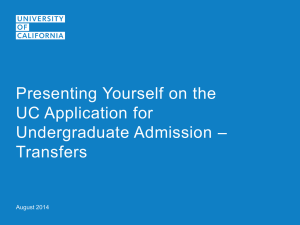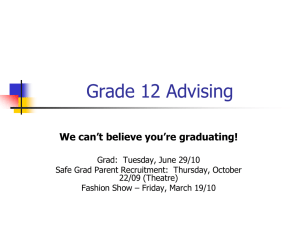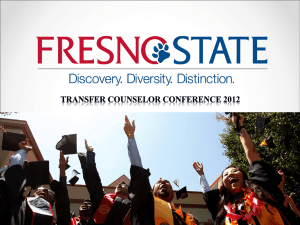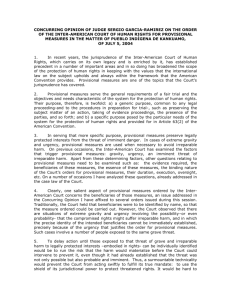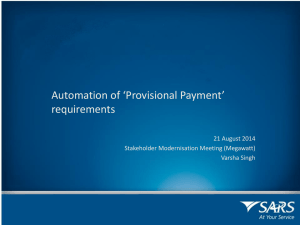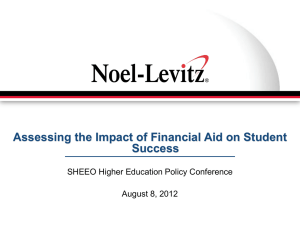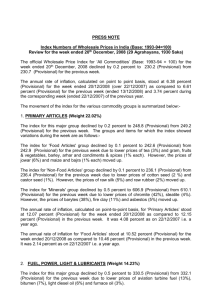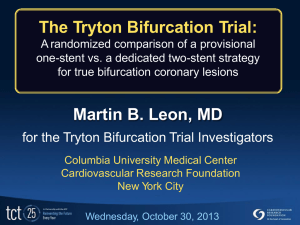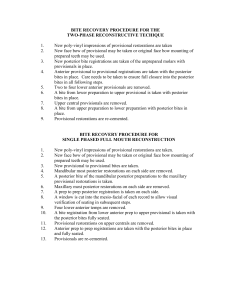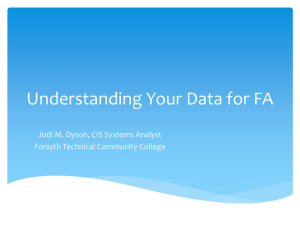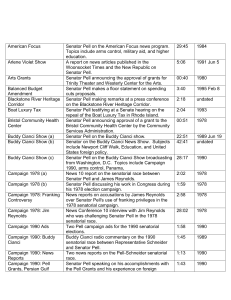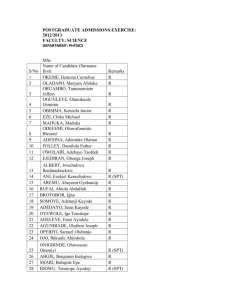Provisional Admission: Enhancing College Opportunity
advertisement
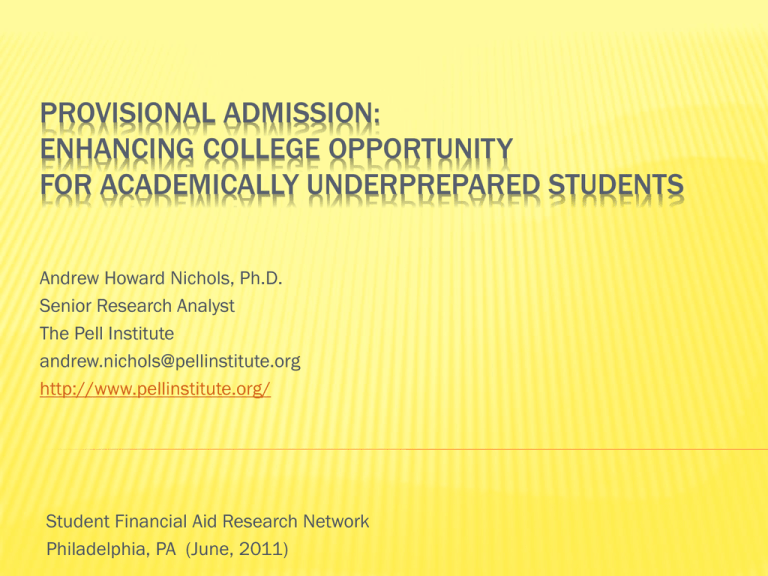
PROVISIONAL ADMISSION: ENHANCING COLLEGE OPPORTUNITY FOR ACADEMICALLY UNDERPREPARED STUDENTS Andrew Howard Nichols, Ph.D. Senior Research Analyst The Pell Institute andrew.nichols@pellinstitute.org http://www.pellinstitute.org/ Student Financial Aid Research Network Philadelphia, PA (June, 2011) SESSION OUTLINE Overview Definition of Provisional Admission Rationale Design Quantitative Qualitative Discussion / Recommendations Questions and comments 2 STUDY OVERVIEW Joint venture with National Association of College Admission Counseling (NACAC) Funded by the Lumina Foundation for Education Study is complete & report to be published later this summer (2011) 3 WHAT IS PROVISIONAL ADMISSION? A mechanism for colleges to enroll students who show potential to succeed in college but may not meet standard or preferred academic qualifications. Provisionally admitted students are asked to satisfy requirements beyond what is expected of regularly admitted students. Meet certain academic performance requirements, Take specific classes or a reduced course load Utilize or participate in special student services Provisional admission practices also are referred to by other names, such as conditional admission. 4 THE CASE FOR PROVISIONAL ADMISSION Initial enrollment at a 4-year college is positively related to bachelor’s degree attainment Programs / policies often include additional support and structure Help enhance institutional diversity Relatively unexplored in the research literature 5 DESIGN – MIXED METHODS APPROACH Quantitative: 17-item survey sent to admission office personnel at 1,263 distinct 4-year institutions. 26% response rate. Administered in Fall 2010 as part of NACAC’s Annual Admission Trends Survey Qualitative: Document analysis, interviews, & focus group discussions during site visits to 5 fouryear campuses with provisional admission programs / policies 6 SURVEY Sample (n = 330) Sample was fairly representative with regard to: Control– slightly more privates (73%) Region – S/SW slightly underrepresented Enrollment – smaller colleges underrepresented Selectivity Analysis – frequencies & percentages with crosstabular, correlation, and mean comparison Control, enrollment, %Pell, and selectivity SURVEY FINDINGS 57% (148) of respondents had PA initiatives according to our definition PA positively related to %Pell and acceptance rate Average size = 104 (F2009) & 107(F2010) Larger at public institutions Size positively related to enrollment Provisional admits about 5% of full-time, first-time admits in F2010 8 SURVEY FINDINGS (CONT.) 79% of institutions DIDN’T target specific student populations Most selective more likely to target selected students Public more likely to target athletes Larger schools more likely to target racial/ethnic & 1stgen students Only 18% of institutions conducted special outreach Selective more likely to reach out SURVEY FINDINGS (CONT.) Program components Specific courses (62%) Reduced course load (61%) Minimum GPA (50%) Orientation (48%) Full-time attendance (63%) 70% Private, 33% Public (High %Pell were less likely to require) Only 18% offered financial support Required Services Regular meetings with advisor (88%) Mandated tutoring (67%) Peer Mentoring (36%) SURVEY FINDINGS (CONT.) Evaluation & Success 72% indicated they evaluate…something 1st year GPA (84%) 1st to 2nd year retention (82%) Cumulative GPA (58%) 4 year graduation rate (51%) 6 year graduation – Public (67%), Private (34%) 72% of students in these programs were retained to the second year Moderate negative relationship between %Pell and 1st year completion 11 CONCLUSIONS FROM SURVEY Provisional admission initiatives can be expanded, particularly at 4yr public institutions Increase outreach & target services toward historically underrepresented groups Programs seem fairly successful with 1st year retention – our data compared favorably to IPEDS & ACT data Long-term impact of these programs needs to be examined. Unable to obtain 6yr graduation rates 12 SITE VISIT SELECTION CRITERIA The institution must be a 4-year, bachelor degree-granting institution within the United States that receives Title IV funds. The institution must exceed their respective sector’s percent increase between 1998/99 and 2007/08 in Pell grant recipients. 26.5% for public institutions 28.9% for private institutions SITE VISIT SELECTION CRITERIA (CONT.) The institution’s percentage of undergraduates receiving Pell grants must exceed their respective sector’s representation of all Pell grant recipients in 07/08. 30.3% for public institutions 13.6% for private institutions The institution must have a broad academic focus. Schools were removed if they had a specific focus (e.g., bible colleges, medical, art, etc.) SITE VISIT SELECTION CRITERIA (CONT.) Started with over 1,500 institutions Ended up with slightly over 200 6 item screening survey was sent to schools that were NACAC member institutions Browsed websites and made phone calls Invited 13 schools to participate and 5 agreed Pine Manor College (MA), California State University – Stanislaus (CA), Fayetteville State University (NC), Winthrop University (SC), and Notre Dame College (OH) SITE VISIT FINDINGS & CONCLUSIONS Discovered three PA models Supplemental tutoring model Winthrop University Notre Dame College Cohort-based Pine curricular instruction model Manor College Summer bridge experience model California State University, Stanislaus Fayetteville state university 16 SITE VISIT FINDINGS & CONCLUSIONS Students Benefits of PA Provided educational opportunity Promoted academic success Academic skill building Study and time management skills Helped build confidence Helped students build relationships Peer friendships Connections with faculty 17 RECOMMENDATIONS FOR PA INITIATIVES No “best” provisional model Require academic support Clearly outline policies and requirements Involve faculty Establish early contact Encourage engagement Monitor student performance Maintain contact Evaluate 18 COMMENTS & QUESTIONS Andrew Howard Nichols, Ph.D. Senior Research Analyst The Pell Institute andrew.nichols@pellinstitute.org http://www.pellinstitute.org/
